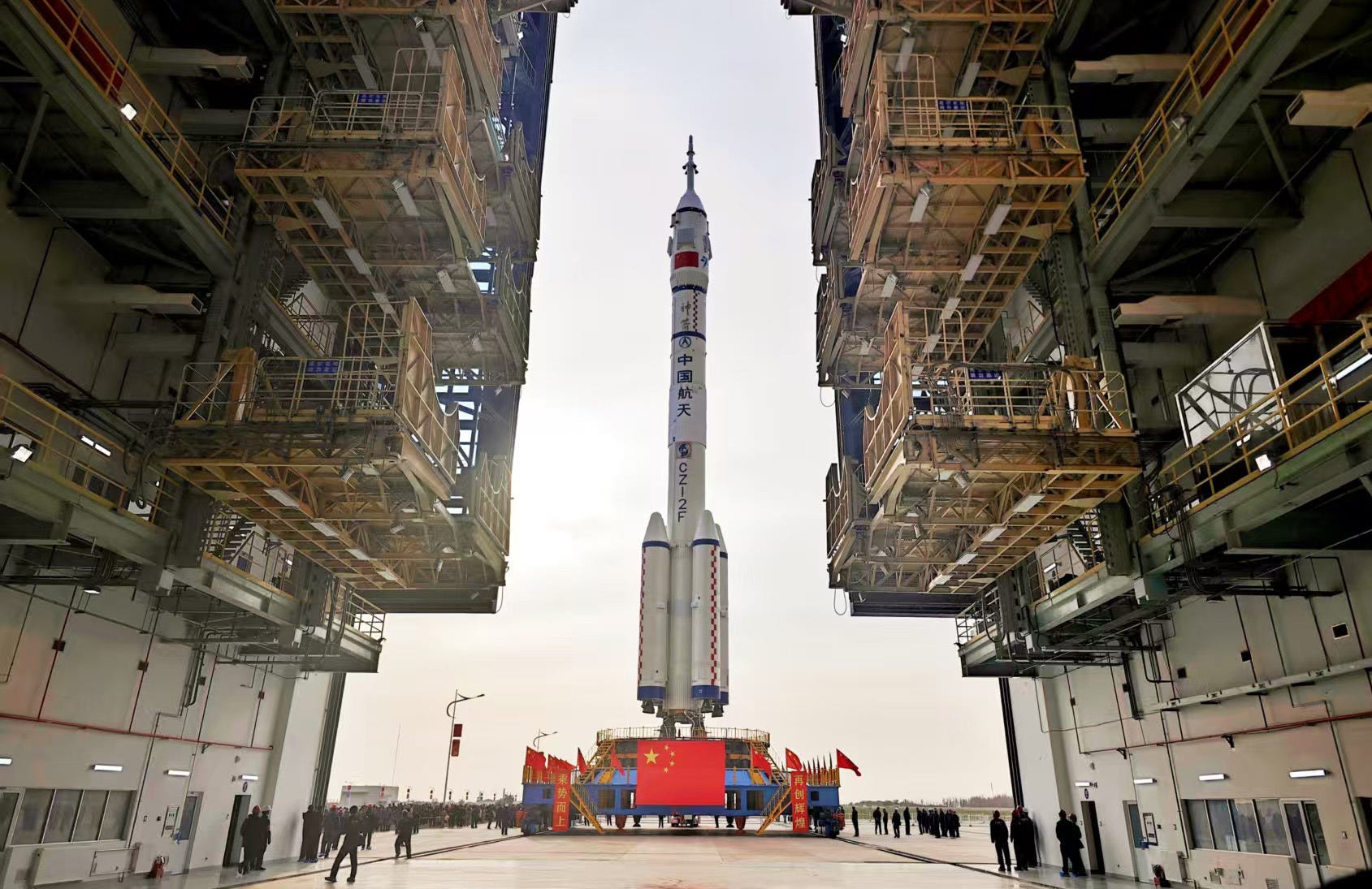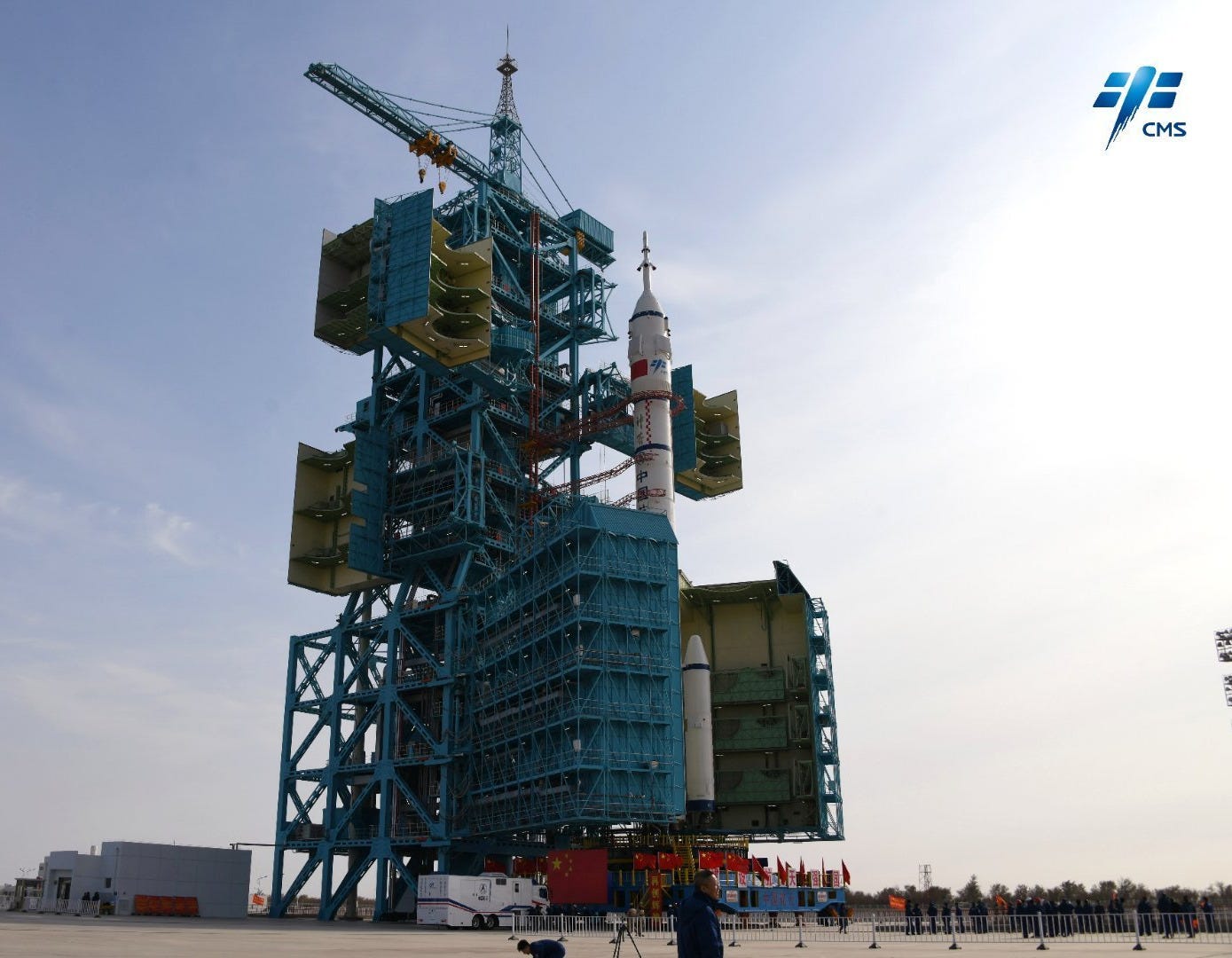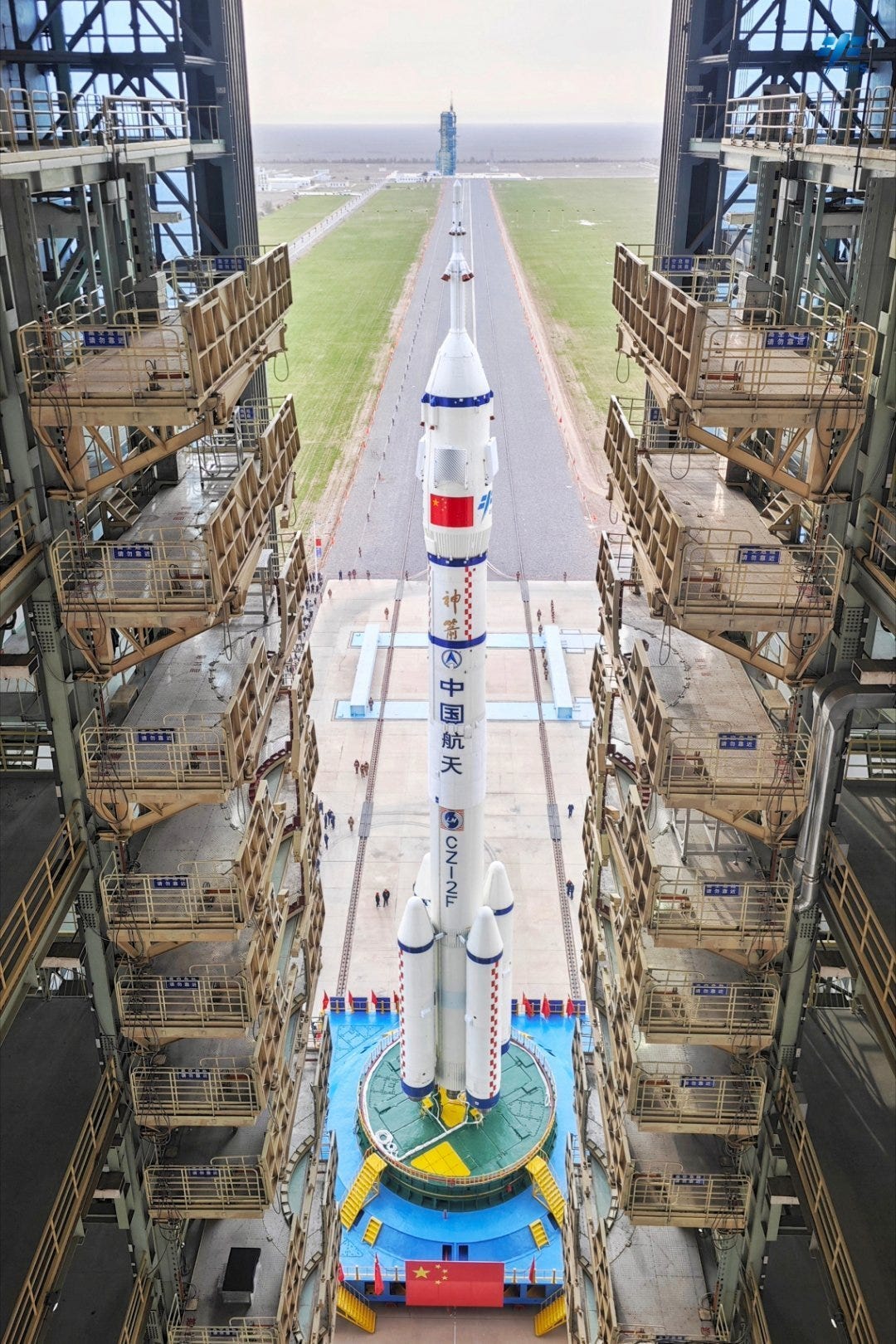Shenzhou-21 Crewed Mission Prepares for Launch
China's latest mission to the Tiangong Space Station is almost ready.

Recently, the China Manned Space Agency and other involved agencies and enterprises have rolled out the Long March 2F/G launch vehicle with the Shenzhou-21 spacecraft to the launch pad at the Jiuquan Satellite Launch Center on October 24th.
The mission is currently working towards an October 31st launch to the Tiangong Space Station in low Earth orbit, with the orbiting laboratory having conducted maneuvers to properly align with various rendezvous opportunities. Full rehearsals of the launch process are planned to be performed too.
As is standard for China’s crewed missions, the Shenzhou-21 crew is not currently known and will be announced in the days before launch through two press conferences. The first will be with management from the China Manned Space Agency, who will provide their biographies and other mission details, followed by the crew meeting the press.
Three people who know the identities of the crew and are currently awaiting them are the Shenzhou-20 trio, Commander Chen Dong (陈冬), Operator Chen Zhongrui (陈中瑞), and Science Operator Wang Jie (王杰), who have been in space since April 24th, about six months ago. Once the Shenzhou-21 crew arrives, the six taikonauts will spend about a week together onboard Tiangong, before the Shenzhou-20 mission returns to Earth in November.

To ensure the highest possible chance of mission success, joint tests between teams and systems are set to take place in the lead-up to launch, also ensuring the spacecraft, rocket, and launch site remain in good condition. As part of that, teams from the China Academy of Launch Vehicle Technology, the China Academy of Space Technology, and other entities under China Aerospace Science and Technology Corporation are present at Jiuquan, having been ‘mobilized’ the day before rollout.
In the days ahead of the rollout for Shenzhou-21, teams belonging to the Jiuquan Satellite Launch Center conducted comprehensive inspections of every system and facility that the mission would use, including electrical tests of the launch vehicle service platforms at the launch pad and searching for warping along rail tracks that the launch pad and vehicle travel along. Where necessary, speedy repairs and replacement of supporting hardware was performed.
What is the Long March 2F?
This section is for those less familiar with China’s Long March series of launch vehicles.
The Long March 2F is the only human-rated launch vehicle currently active in China, with it developed by the China Academy of Launch Vehicle Technology. Two versions of the launch vehicle are currently active, the 2F/G and 2F/T. The Long March 2F/G launches the Shenzhou spacecraft, while the 2F/T launches China’s reusable spaceplane and did launch the first two Tiangong space stations. All versions of the Long March 2F have had the boosters, first, and second-stage burn Dinitrogen Tetroxide and Unsymmetrical Dimethylhydrazine.
The payload capacity of the launch vehicle is currently as follows:
8,400 kilograms to low Earth orbit

Powering the first-stage are four YF-20B engines generating a combined 332 tons of thrust, burning Dinitrogen Tetroxide and Unsymmetrical Dimethylhydrazine. Augmenting the thrust of the first-stage are four boosters, each powered by one YF-20B, each generating 83 tons of thrust each for a combined booster thrust of 332, while also burning Dinitrogen Tetroxide and Unsymmetrical Dimethylhydrazine. The combined thrust of the first-stage and four boosters is 664 tons of thrust. The second-stage of the vehicle is powered by one YF-24B generating 85 tons of thrust, once again burning Dinitrogen Tetroxide and Unsymmetrical Dimethylhydrazine.
On the launchpad, the Long March 2F is 62 meters tall, with the Shenzhou spacecraft’s launch escape system, and weighs 464,000 kilograms when fully fuelled. The first and second stages have a diameter of 3.35 meters, with the four boosters having a diameter of 2.3 meters, and the Shenzhou spacecraft’s protective fairing has a maximum diameter of 3.6 meters.
So far, the Long March 2F has only flown from the Jiuquan Satellite Launch Center, in the west of the Inner Mongolia Autonomous Region and the north of Gansu province.


